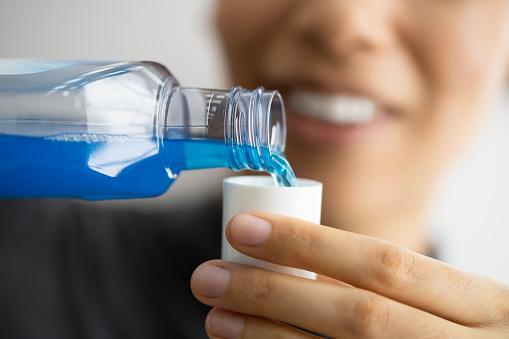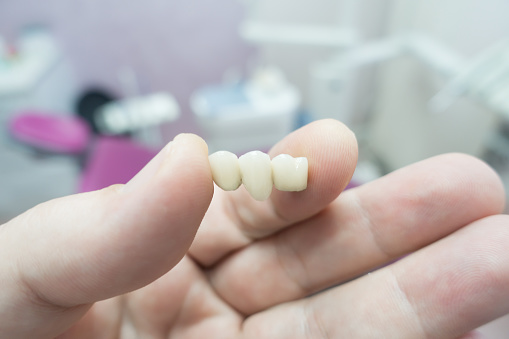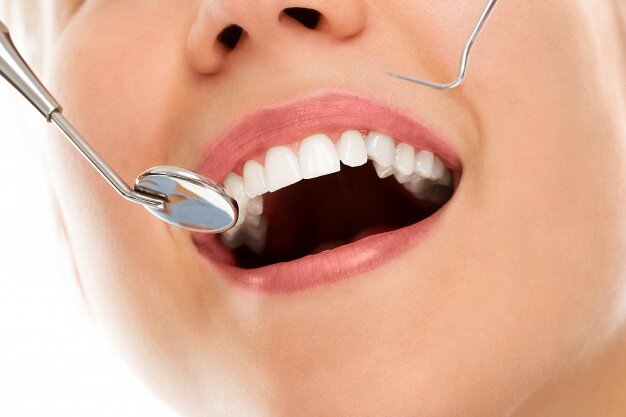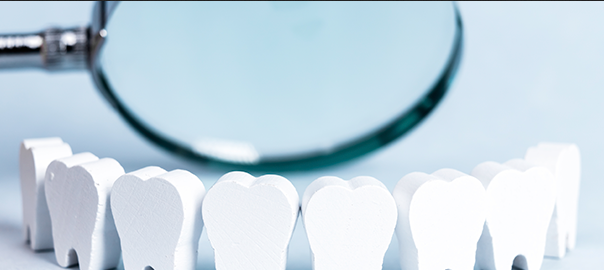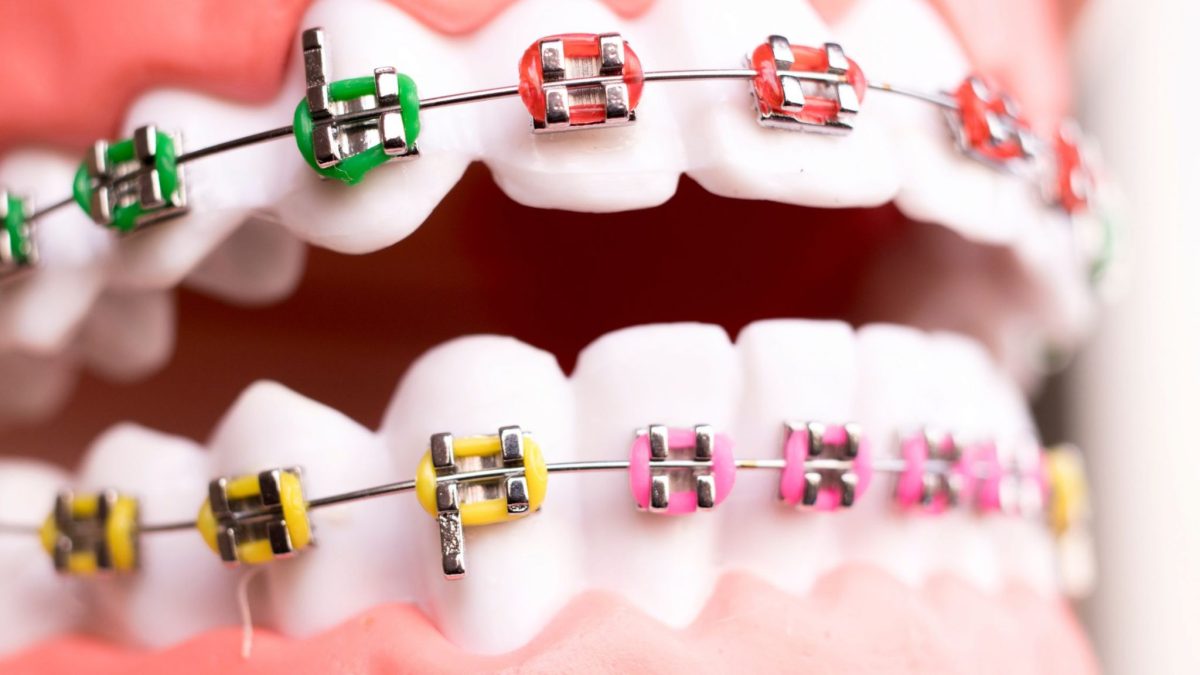Don’t be fooled by the happy people in Listerine commercials having a blast while they swish with mouthwash. It’s a myth that mouthwash cures bad breath.
Here are two main reasons why the best mouthwash for bad breath is no mouthwash at all.
- Mouthwash can cause bad breath because it dries out the mouth.
- Mouthwash cannot replace the effectiveness of brushing, flossing, and scraping.
Learn more about why you should not use mouthwash.
Mouthwash can cause bad breath because it dries out the mouth
Most mouthwash brands contain alcohol that dries out your mouth. Some brands contain up to 25% alcohol, which is more than wine or beer!
The compounds in alcohol – ethyl alcohol or acetaldehyde – can damage your salivary glands.
Ethyl alcohol and acetaldehyde can cause:
- Cell death
- Fat accumulation
- Swelling in your salivary glands.
Eventually, the damage to your salivary glands will result in a dry mouth.
Also, here’s something you may not realize that happens when you use mouthwash right after you brush your teeth.
Mouthwash contains cationic compounds that act as surfactants. Your toothpaste contains anionic compounds. Cations always neutralize anions. The neutralization effect created by your toothpaste and mouthwash can increase the drying out of your cheeks and create the perfect environment for bad breath and mouth ulcers.
What does dry mouth have to do with bad breath?
Saliva is what keeps your oral bacteria in a symbiotic and balanced state. It maintains a healthy pH and ensures that certain types of bacteria don’t propagate or get out of control.
If you are not producing enough saliva (i.e., dry mouth), you can’t get rid of harmful bacteria. This can exacerbate bad breath.
Also, chemical mouthwashes kill bacteria indiscriminately. This disrupts the ratio of good and bad bacteria, allowing dangerous bacteria to proliferate and cause bad breath.
What Mouthwash do I recommend if you have to get one?
Maybe you have an important interview or date coming up, and you’d like your mouth to feel a bit minty and fresh. In such special circumstances, you may choose to use mouthwash. However, I do not recommend the use of mouthwash daily.
Here are some natural mouthwashes you can use if you need them.
- RiseWell Alkalizing Mouthwash
If you have to get mouthwash, use brands that contain pH-balancing ingredients.
A great mouthwash that balances the mouth’s pH naturally is RiseWell Alkalizing Mouthwash. This naturally alkaline mouthwash inhibits the growth of bad bacteria and leaves your mouth feeling fresh.
The ingredients in RiseWell Alkalizing Mouthwash include:
- Xylitol – inhibits bad bacteria.
- Sodium bicarbonate – gentle cleanser and pH balancer
- Wild mint and peppermint oils – freshen and kill bacteria.
- Tea tree oil – antibacterial and antifungal
- Cinnamon and thyme extracts – antimicrobial antioxidants
- Orange, lemon, and eucalyptus oils – anti-inflammatory properties
- Echinacea extract – soothes and boosts immunity
- Stevia and erythritol – natural sweeteners
- Aesop Mouthwash
If you want to freshen your breath a bit, you can use Aesop mouthwash, an Australian brand that is alcohol-free. Using an alcohol-free formulation will not disturb your mouth’s natural balance.
Aesop mouthwash contains the following key ingredients:
- Clove bud – a natural analgesic
- Anise – antimicrobial properties
- Spearmint leaf – antimicrobial properties
- Lumineux by Oral Essentials
Lumineux is made with Dead Sea salt, which can help your teeth with remineralization. As an added benefit also contains holy basil oil that helps you reduce your stress levels.
Lumineux mouthwash contains the following key ingredients:
- Dead Sea salt – rich in minerals
- Holy basil oil – works as an adaptogen to reduce your stress levels
- Aloe vera juice – soothes and heals the mouth.
Mouthwash can’t replace brushing, flossing, and scraping
Another reason why I don’t recommend the use of mouthwash is that it cannot replace brushing, flossing, and scraping.
Commercials for Listerine (or any other popular fluoride mouthwash), with their fancy visuals of waves of mouthwash magically scraping away plaque from tooth surfaces, will have you believe that all you need is a swig of mouthwash to make plaque disappear. But bad breath isn’t cured by rinsing with mouthwash – in fact, it’s worsened by it!
The plaque that causes bad breath must be removed by physical action
The truth is that no liquid or amount of rinsing can remove plaque from tooth surfaces (and plaque is what causes bad breath). Plaque must be removed by physical action – and this is the role of brushing, flossing, and brushing.
Mouthwash ads will claim that their mouthwash, “Kills bacteria and bad breath chemically,” which is impossible. If the surfaces of your teeth and gums have plaque stuck to them, your mouthwash won’t have any contact with the bacteria on your teeth and gums, and you’ll be stuck with bad breath, no matter how minty your mouthwash might smell.
A few years ago, Listerine claimed that using their mouthwash is the equivalent of flossing. These claims were quickly disputed by the dental community and the ad campaign was dropped after a lawsuit that found the ad to be false, misleading, and a public health risk.
Scraping the bacteria from your tongue helps with bad breath
Bad breath is caused by stinky bacteria (sulfur bonds) on your teeth and tongue. Flossing and brushing can remove bacteria from your teeth, while scraping can get rid of bacteria on your tongue. This is why tongue scraping is so effective at dealing with bad breath.
Buy a tongue scraper from your local drugstore and scrape once a day – you’ll be amazed and what comes off your tongue and what a difference it makes.
How to get rid of bad breath without mouthwash?
To cure bad breath, ditch your mouthwash!
Instead, brush after meals, floss, and use your tongue scraper at least once daily.
Drink plenty of water to keep bacteria-regulating saliva in full force.
All Mouthwashes Are Not Created Equal
There are many different types and brands of mouthwashes that all claim to offer different benefits while using them. Most mouthwashes can be sorted into two categories – Cosmetic and therapeutic.
Cosmetic Mouthwash: Rinsing with a cosmetic mouthwash will help to loosen food from your teeth and gums and decrease the number of bacteria in your mouth. Harmful bacteria create excessive plaque, which turns to tartar if it’s not removed in time. These products will also leave your breath tasting fresh.
Therapeutic Mouthwash: Using a therapeutic mouthwash containing ingredients like essential oils, chlorhexidine, and fluoride has been proven to reduce plaque and help fight cavities and restore your enamel.
How To Find the Right Mouthwash For Your Dental Needs
When choosing a mouthwash, the most important thing to remember is that no mouthwash is a substitute for brushing and flossing. Regardless of what type of mouthwash you use, be sure to follow the manufacturer’s instructions and recommendations listed on the product and ask your dentist for any clarifications on how to use the product correctly.

